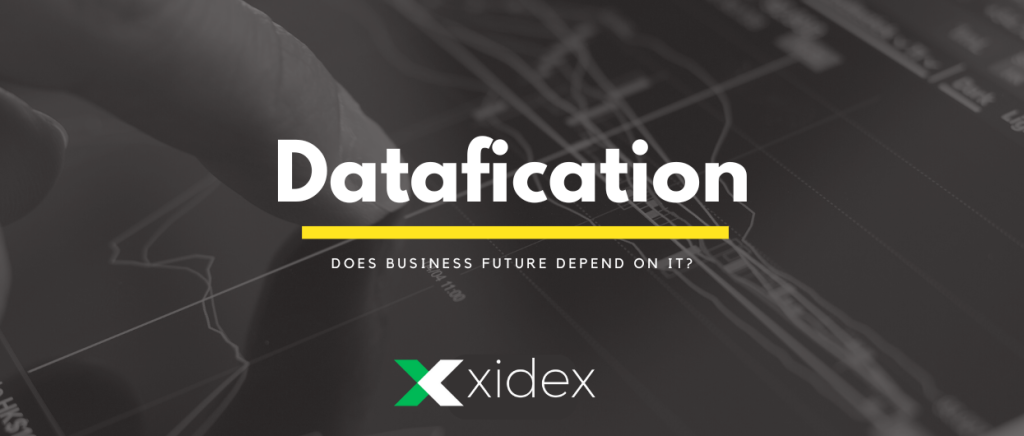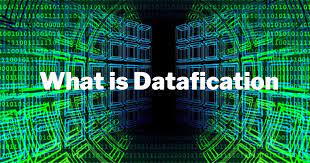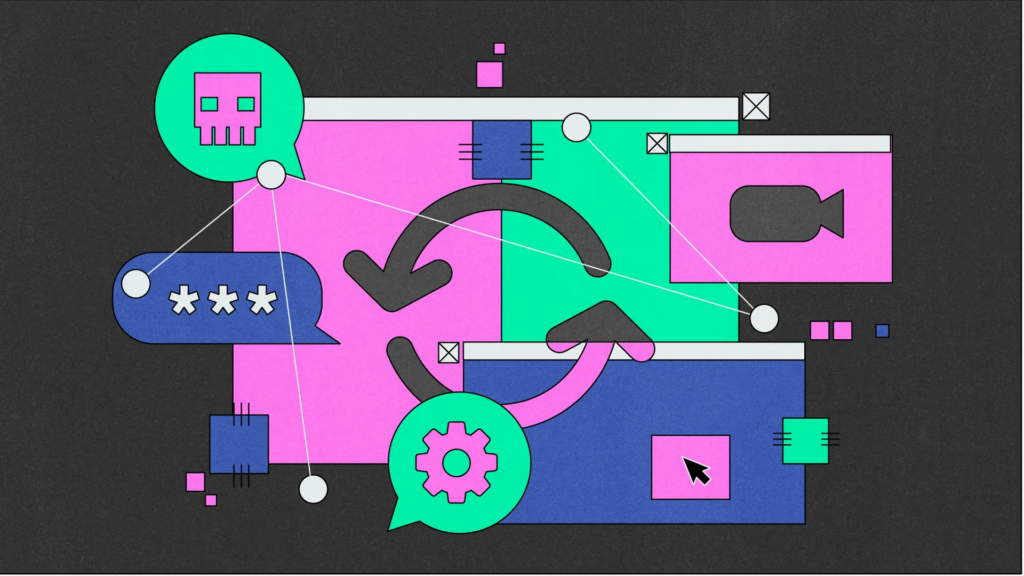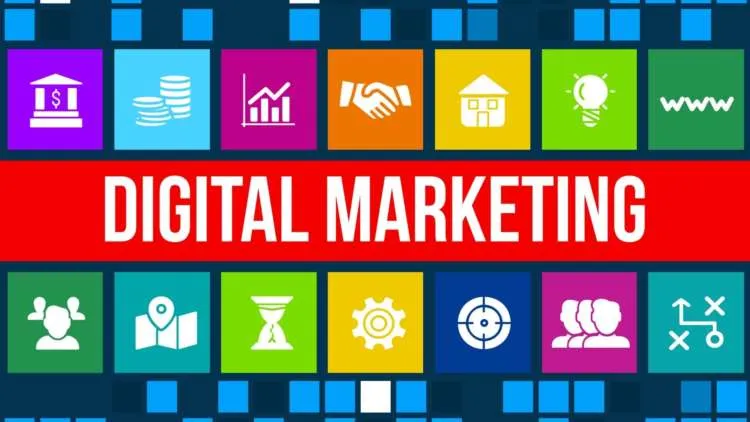Datafication refers to the process of converting various aspects of the world into digital data that can be stored, analyzed, and utilized for various purposes. It involves collecting and transforming analog information into digital formats that can be easily processed by computers and algorithms.
In today’s digital age, vast amounts of data are being generated from various sources such as sensors, social media, websites, mobile devices, and more. This data is diverse in nature and includes text, images, videos, audio recordings, and numerical values. The process of datafication enables organizations and individuals to capture, store, and leverage this data for gaining insights, making informed decisions, and developing new products and services.
Datafication has been made possible by advancements in technology, including the widespread use of the internet, the proliferation of connected devices (Internet of Things), and the development of powerful computing systems and algorithms. These advancements have facilitated the collection, transmission, storage, and analysis of large volumes of data at high speeds.

The benefits of datafication are significant. It allows organizations to better understand their customers, optimize their operations, and develop data-driven strategies. For example, e-commerce companies can analyze customer browsing and purchase behavior to personalize recommendations and improve customer satisfaction. Healthcare providers can leverage patient data to enhance diagnoses, treatment plans, and overall healthcare outcomes.
However, datafication also raises concerns about privacy, security, and the ethical use of data. The vast amount of data collected and analyzed can contain sensitive information, leading to potential privacy breaches if not adequately protected. Additionally, the use of data in decision-making processes can raise concerns about bias, discrimination, and fairness.
To address these challenges, regulations such as the General Data Protection Regulation (GDPR) in the European Union and the California Consumer Privacy Act (CCPA) in the United States have been implemented to protect individuals’ data privacy rights and establish guidelines for responsible data use.
datafication represents a transformative process that has the potential to drive innovation, improve efficiency, and empower individuals and organizations. However, it is crucial to navigate the associated challenges and ensure that data is collected, stored, and utilized responsibly and ethically.
The concept of Datafication
The concept of data refers to raw, unprocessed facts, figures, symbols, or observations that are typically represented in numerical, textual, or other forms. Data is the foundation of information and knowledge and plays a crucial role in various fields, including science, technology, business, and everyday life.
Data can be collected through various means, such as surveys, sensors, experiments, observations, and transactions. It can be structured, where data is organized in a predefined format, such as a database, with clearly defined fields and relationships. Structured data is typically easier to analyze and process. On the other hand, data can also be unstructured, which refers to data that does not have a predefined format and includes text, images, videos, social media posts, and more. Unstructured data often requires advanced techniques, such as natural language processing and image recognition, to extract meaningful insights.
Data can be further categorized into qualitative and quantitative data. Qualitative data describes characteristics, properties, or qualities and is typically non-numerical in nature. It can include descriptions, opinions, interviews, or observations. Quantitative data, on the other hand, represents numerical values or counts and is often obtained through measurements or counting. It includes metrics, statistics, measurements, and other numerical values.
Data can be analyzed and processed to extract meaningful information and insights. This involves applying various techniques, such as statistical analysis, data mining, machine learning, and visualization, to uncover patterns, relationships, trends, and correlations within the data. The ultimate goal of analyzing data is to gain knowledge, make informed decisions, solve problems, and drive innovation.
In recent years, the availability of large amounts of data, often referred to as “big data,” has revolutionized the way organizations operate and make decisions. The advent of technologies such as cloud computing, advanced analytics, and artificial intelligence has made it possible to store, process, and analyze massive volumes of data in real time. This has opened up new possibilities for data-driven decision-making, predictive analytics, personalized services, and the development of innovative products and solutions.
However, with the increasing reliance on data, it is crucial to consider the quality, accuracy, relevance, and ethical implications of data collection, storage, and usage. Organizations and individuals must ensure that data is collected responsibly, protected from unauthorized access, and used in a manner that respects privacy and complies with applicable regulations and ethical standards.
Datafication vs. Digitization
Datafication and digitization are two related but distinct concepts in the realm of data and technology.
Digitization refers to the process of converting analog information or physical assets into digital formats. It involves taking content, such as text, images, audio, or video, and transforming it into a binary representation that can be stored, manipulated, and transmitted using digital technology. For example, scanning a printed document and converting it into a digital PDF file is a form of digitization. Digitization enables the preservation, accessibility, and manipulation of information in electronic form, making it easier to store, search, share, and analyze.
On the other hand, datafication goes beyond digitization by not only converting analog information into digital formats but also by systematically collecting, organizing, and analyzing data to derive insights and value. Datafication involves the process of transforming various aspects of the world, including behaviors, interactions, transactions, and processes, into quantifiable data that can be captured, stored, and analyzed. It is about turning everyday activities and phenomena into data points that can be used for analysis, decision-making, and innovation.
In essence, digitization is a foundational step that enables datafication. Digitized data serves as the raw material for datafication, allowing organizations and individuals to collect, aggregate, and analyze vast amounts of data from multiple sources. Datafication involves applying advanced analytics, machine learning, and other techniques to extract meaningful insights, patterns, and correlations from the digitized data.
To illustrate the relationship between the two concepts, consider a library’s transition from physical books to digital e-books. Digitization would involve the process of scanning physical books and converting them into digital formats, making them accessible on e-readers or digital platforms. Datafication, in this context, would involve collecting data on users’ reading habits, preferences, and interactions with the e-books, allowing the library to gain insights on popular genres, reading patterns, or personalized recommendations.
In summary, digitization focuses on the conversion of analog content into digital formats, while datafication goes a step further by collecting and analyzing digitized data to derive insights and value. Both concepts play significant roles in the digital age, enabling the storage, manipulation, and utilization of information for various purposes.
The controversion over datafication
The concept of datafication has generated both excitement and controversy in various domains. While datafication offers numerous benefits and opportunities, it also raises concerns and challenges that have sparked debates and controversies. Here are some key points of controversy surrounding datafication:
- Privacy and Data Security: Datafication involves collecting and analyzing vast amounts of personal data, raising concerns about privacy and data security. The collection and utilization of personal information can potentially infringe on individuals’ privacy rights if not handled responsibly. There are concerns about unauthorized access, data breaches, identity theft, and surveillance. Striking a balance between data-driven innovation and protecting individuals’ privacy is a complex and ongoing challenge.
- Data Ownership and Control: Datafication often involves the collection of data from various sources, including individuals, organizations, and devices. Questions arise regarding who owns and controls the data, and how it can be used. Issues of consent, data sharing, and data monetization can create controversies. Ensuring transparency and empowering individuals and organizations to have control over their data are important considerations.
- Algorithmic Bias and Discrimination: Datafication relies on algorithms to analyze and make decisions based on data. However, algorithms can be biased and perpetuate discrimination if the data they are trained on contains biases. Controversies have emerged around biased algorithms leading to unfair outcomes in areas such as employment, criminal justice, and lending. Addressing algorithmic bias and ensuring fairness in data analysis and decision-making processes are critical challenges.
- Ethical Use of Data: The ethical implications of datafication are a subject of debate. There are concerns about data being used for manipulative purposes, such as targeted advertising or behavioral manipulation. The use of personal data without informed consent or for purposes beyond the original intent can raise ethical questions. Establishing ethical guidelines and frameworks for responsible data use is an ongoing discussion.
- Inequality and Data Divide: Datafication has the potential to exacerbate existing social and economic inequalities. Not everyone has equal access to data or the technical skills to leverage it effectively. The digital divide and data divide create disparities in opportunities and access to the benefits of data-driven technologies. Bridging these divides and ensuring equitable access to data and technology is a significant challenge.
- Cultural and Social Implications: Datafication can impact social norms, cultural practices, and human relationships. It raises questions about the commodification of personal information, the erosion of privacy boundaries, and the loss of human touch in decision-making. The cultural and social implications of datafication, including issues of trust, autonomy, and agency, are subjects of ongoing discussion.
Addressing these controversies requires multidisciplinary approaches involving policymakers, technologists, ethicists, and the general public. It involves developing robust data governance frameworks, establishing privacy regulations, promoting transparency and accountability in data practices, and fostering ethical considerations in data-driven decision-making. Striking a balance between innovation and responsible data use is crucial to mitigate the controversies surrounding datafication.
Datafication for business
Datafication offers significant advantages for businesses in various industries. By leveraging data and analytics, businesses can gain insights, make data-driven decisions, and drive innovation. Here are some key benefits of datafication for businesses:
- Improved Decision-Making: Datafication enables businesses to make informed decisions based on evidence rather than intuition or guesswork. By analyzing data, organizations can uncover patterns, trends, and correlations that provide valuable insights into customer behavior, market dynamics, operational efficiency, and more. These insights can guide strategic planning, product development, and resource allocation, leading to better decision-making.
- Enhanced Customer Understanding: Datafication allows businesses to gain a deep understanding of their customers. By analyzing customer data, such as purchase history, browsing behavior, demographic information, and feedback, organizations can develop comprehensive customer profiles and segment their customer base. This enables personalized marketing campaigns, targeted product recommendations, and improved customer experiences, fostering customer loyalty and satisfaction.
- Operational Optimization: Datafication helps businesses optimize their operations and improve efficiency. By collecting and analyzing operational data, organizations can identify bottlenecks, inefficiencies, and areas for improvement. This can lead to streamlined processes, optimized supply chain management, predictive maintenance, and cost reduction. Data-driven insights can also facilitate real-time monitoring and decision-making, enabling businesses to respond quickly to changing market conditions or operational challenges.
- Product Innovation and Development: Datafication fuels product innovation and development. By analyzing customer feedback, market trends, and competitive landscapes, organizations can identify unmet needs, emerging opportunities, and areas for innovation. Data-driven insights can inform product design, features, and improvements, helping businesses develop products that better align with customer preferences and market demands.
- Competitive Advantage: Datafication provides a competitive edge in today’s business landscape. By harnessing data, organizations can gain insights that differentiate them from competitors. Data-driven decision-making and optimization can lead to improved customer experiences, operational efficiency, and innovation, setting businesses apart in the market. Data-driven businesses are better equipped to adapt to market changes, seize opportunities, and stay ahead of the competition.
- Predictive Analytics and Forecasting: Datafication enables businesses to leverage predictive analytics and forecasting. By analyzing historical and real-time data, organizations can build models that predict future trends, customer behavior, demand fluctuations, and market dynamics. This helps businesses make proactive decisions, anticipate customer needs, optimize inventory management, and minimize risks.
It is important for businesses to develop the necessary infrastructure, capabilities, and processes to effectively leverage datafication. This includes data collection and storage mechanisms, data governance frameworks, data analytics tools, and talent with expertise in data analysis and interpretation. By embracing datafication, businesses can unlock valuable insights and opportunities for growth, competitiveness, and innovation.
Datafication examples
Datafication has been widely implemented across various industries and domains. Here are a few examples of how datafication is applied in practice:
- E-commerce and Retail: Online retailers extensively use datafication to understand customer preferences, optimize product recommendations, and personalize marketing efforts. They collect and analyze customer data, such as purchase history, browsing behavior, and demographic information, to offer personalized product suggestions, targeted promotions, and tailored shopping experiences.
- Healthcare: Datafication plays a crucial role in healthcare, enabling improved patient care and outcomes. Electronic health records (EHRs) digitize patient information, allowing healthcare providers to access and analyze medical data efficiently. Datafication also enables remote patient monitoring, wearable devices for health tracking, and the analysis of large-scale health datasets for disease surveillance, treatment effectiveness, and predictive modeling.
- Transportation and Logistics: The transportation and logistics industry heavily relies on datafication for route optimization, supply chain management, and real-time tracking. By collecting and analyzing data from GPS systems, sensors, and delivery networks, companies can optimize delivery routes, minimize fuel consumption, and improve overall efficiency. Datafication also enables predictive maintenance of vehicles and real-time monitoring of cargo.
- Smart Cities: Datafication is a key component of building smart cities. By deploying sensors and IoT devices across urban infrastructure, cities can collect data on traffic patterns, energy consumption, waste management, air quality, and more. Analyzing this data helps city planners make informed decisions regarding urban planning, resource allocation, and sustainability initiatives.
- Financial Services: Datafication has transformed the financial services industry, enabling better risk management, fraud detection, and personalized financial services. Banks and financial institutions leverage data analysis to assess creditworthiness, detect suspicious transactions, and provide personalized investment recommendations based on customer financial profiles and market trends.
- Manufacturing and Industry 4.0: Datafication is a cornerstone of the Industry 4.0 revolution. By collecting and analyzing data from sensors, production lines, and machinery, manufacturers can optimize production processes, monitor equipment health, and implement predictive maintenance strategies. Datafication enables real-time monitoring of performance metrics, quality control, and supply chain visibility, leading to increased productivity and cost savings.
These examples represent just a fraction of the numerous ways datafication is applied across industries. From marketing and finance to agriculture and energy, datafication has the potential to revolutionize operations, decision-making, and innovation in various sectors.
Read More : Microsoft’s Satya Nadella Is Betting Everything on AI





